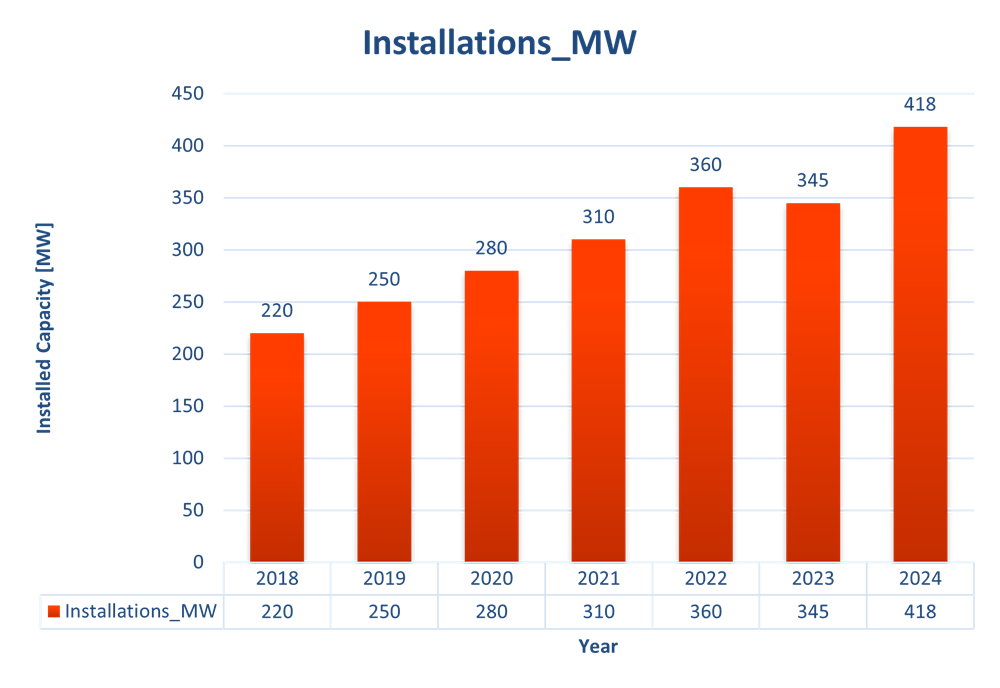Based on the 2025 update of the Technology Collaboration Programme on Advanced Fuel Cells (AFC TCP) data survey, the stationary fuel cell market continues to demonstrate robust growth and diversification worldwide. Global installations of stationary fuel cells reached approximately 345 megawatts (MW) in 2023, with forecasts projecting an increase to about 418 MW in 2024. The cumulative global installed capacity now exceeds 2 gigawatts (GW), highlighting the accelerating adoption of this clean energy technology.
A specialized team coordinated the data collection efforts related to stationary fuel cell installations and associated technologies within the AFC TCP framework. This rigorous approach ensures that the data encompasses a broad range of sources from member countries and external contributors, allowing for a comprehensive and accurate overview of global stationary fuel cell deployment. The dataset supports detailed analysis of market trends, technology adoption, and emerging applications, facilitating informed decision-making for policymakers and industry stakeholders alike.
Figure 1 illustrates the historical trend of stationary fuel cell installations from 2018 to 2024. The installed capacity has shown consistent growth, with a notable increase projected for 2024, reaching 418 MW—an approximately 21% increase over 2023. This trend underscores the expanding market acceptance and deployment of stationary fuel cell systems worldwide, driven by technology maturity and supportive policies. South Korea and the United States remain the principal markets, accounting for nearly 80% of the projected capacity additions in 2024. South Korea leads with over 1 GW of utility-scale systems, primarily based on molten carbonate (MCFC) and phosphoric acid fuel cells (PAFC). The United States follows with roughly 600 MW, dominated by solid oxide fuel cells (SOFC) and MCFC units serving commercial and industrial customers. Japan continues to emphasize residential micro combined heat and power (micro-CHP) solutions employing polymer electrolyte membrane (PEMFC) and SOFC technologies, reaching an installed capacity close to 336 MW. Europe’s capacity is more modest at around 40 MW, mainly from micro-CHP units, whereas China, with less than 20 MW currently installed, is forecasted to experience the highest compound annual growth rate (CAGR) of approximately 42% through 2035.
The global status indicates that fuel cells are rapidly evolving from niche backup solutions into integral components of decentralized, resilient, and sustainable energy systems globally. Their growing deployment across sectors such as telecommunications, emergency power, renewable integration, hydrogen mobility, and carbon capture underscores their strategic importance in a low-carbon future.

Secretariat Technology Collaboration Programme on Advanced Fuel Cells
Marietta Sander
CAMPUS TÜV NORD GROUP
Am TÜV 1
45307 Essen
Germany
Mobile: +49 171 865 0862
E-Mail: secretariat@ieafuelcell.com
© 2025 Advanced Fuel Cells Technology Collaboration Programme In association with IEA 🔶 Web Design by Klicklounge
